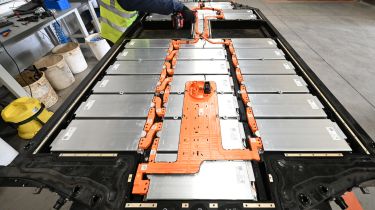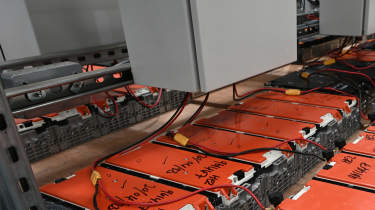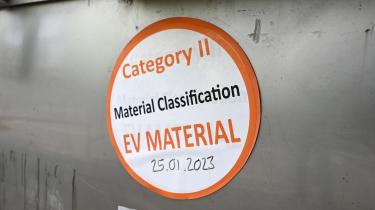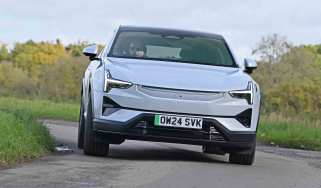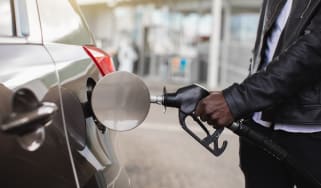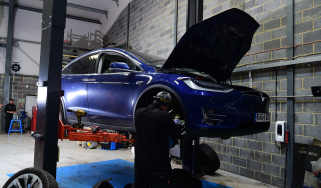What happens to old electric car batteries? Inside the UK's EV battery recycling industry
We pay a visit to Ecobat’s battery recycling facility in the West Midlands
One of the most common issues brought up by those sceptical of electric cars is what will happen to the battery packs once a car is destined for the scrapheap. With EV sales having shot up dramatically in recent years, and the Zero Emission Vehicle (ZEV) mandate looming, it seems logical to assume that in time we’ll have scores of old packs to deal with.
The thing is, car makers are responsible for the battery packs that go in their vehicles right up until the end of their life, so it should come as no surprise when a company like Renault announces its intentions to recycle them as part of a “360-degree circular economy”. Meanwhile others, like Honda, have announced partnerships with specialist firms.
What you might not know is that most OEMs are already working with one firm for end-of-life and second-life hybrid and EV battery work. That company is Ecobat, which has a large recycling centre located right here in the UK, in Darlaston, West Midlands. We were invited to take a look around to see what happens at the facility.
A large part of Ecobat’s business concerns the recycling of conventional batteries, such as lead-acid car batteries and alkaline/zinc batteries from consumer electronics (if you’ve ever stopped to wonder where your old AAs end up after you’ve posted them into supermarket collection bins and the like, wonder no more). However, recycling old batteries from hybrid and electric vehicles has become an increasingly large part of the operation.
Ecobat buys the regular batteries en masse so it can recover and sell on materials, but its relationship with EVs’ and hybrids’ batteries is very different. A car manufacturer’s whole-life responsibility for its battery packs means that, if a battery needs to be assessed and possibly recycled, Ecobat’s services are engaged to find a solution.
“A lot of people think that recycling is something that happens at the end of the battery’s life,” explains Ecobat’s EU marketing director, Peter Coleman, adding, “But we’ll get involved at any stage of that battery’s life, with the goal being to achieve maximum life for a battery.”
Given that we’re still very much in the early stages of the electric revolution, there isn’t a huge number of automotive lithium-ion batteries reaching the end of their life. As a result, much of Ecobat’s work today involves intervention somewhere in the middle of a battery’s life.
“What we are collecting is often accident-damaged, in which case the manufacturers don’t want those going back into circulation, or they are recalls,” explains Ecobat’s EU key accounts director, Tom Seward. “Thirdly, it’s waste from R&D, preproduction and production, so again, they don’t want those going back into reuse,” he adds.
“That’s where the bulk of our materials are coming from today, but we’re all looking at the ‘hockey stick’ growth, and that’s where that transition will come,” Seward says, alluding to the growth in end-of-life recycling of electrified vehicle batteries.
Once Ecobat is involved in the process – for instance, through its partnership with national vehicle-recycling company CarTakeBack – a battery needs to get to the Darlaston facility in approved packaging. Some of the batteries received here are potentially dangerous, which is why Ecobat has special “critical boxes” to house and transport units designated as hazardous.
These steel boxes have thick, insulated walls, and can fit batteries up to 144kWh in size. They’re designed to keep everything contained should a battery experience thermal runaway – a dangerous feedback loop that causes temperatures to shoot right up. Potentially problematic packs are labelled as ‘hostile’ and go to an immediate ‘quarantine’ zone for up to two weeks.
The quarantine enclosure is closely monitored by thermal cameras (these are dotted around the whole facility), and a tent-like roof is used to cover it – this will burn through quickly in the event of a fire, allowing fire-fighting crews easy access to quell any flames.
For the vast majority of the packs that come in, however, this isn’t necessary. They’ll be assessed, graded and discharged, with the excess power fed back into the site, including a bank of electric car chargers. In an ideal world, at that point, if a battery needs what Coleman describes as a “quick fix,” it can be rectified and returned to its “original life”.
If that’s not possible, battery packs will be dismantled. But this is easier said than done; the variety of construction methods is immense. “We’ve probably seen more than 80 different battery types coming through the doors,” Coleman says. “As soon as we get something new that comes in, we’ll write the ‘manual’ as we dismantle it, so that we know exactly what to do with it more quickly the next time.”
The construction methods themselves can cause headaches, too. “There’s a perfect solution from our side, which is where you unbolt a unit and it’s all in lovely modules. You unplug them and then you stack them up and decide what to do with those modules,” Coleman says. “But that isn’t necessarily the most efficient way for a car manufacturer to do it.”
“We’d certainly like to see fewer examples where somebody’s put a blob of glue down before they put a bolt in. That person really doesn’t believe that they’re going to see that battery again,” Coleman tells us, concluding, “That’s kind of someone else’s problem.”
A large part of any battery’s mass comes from the pack’s shell, and there are plenty of materials at this stage that can be recycled, including cabling. We’re shown a large box full of orange high-voltage cables and connectors due to be broken down and recycled, or returned to first-life usage as ‘green’ parts, reducing wastage and further improving the ‘circularity’ of the whole operation.
What Ecobat is left with at this stage is a stack of modules (the size and shape of which vary between different designs), each containing many battery cells. In some cases, they’ll end up going to second-life applications. A single module whose capacity has degraded significantly over the years isn’t particularly suitable for a car, but it can be of use for plenty of less demanding jobs. It could power a temporary traffic light, for example. Or, a series of modules could be reused in a power-storage system.
Some modules are earmarked for recycling; these are broken down into individual cells and sent to the on-site ‘shredder’. It’s a relatively small prototype unit, Coleman says, and it’s set to be replaced with a machine 20 times its capacity (10,000MT a year). The cells are loaded into a hopper, with an inert gas fed in to reduce the thermal reaction as the batteries are shredded.
Ferrous and non-ferrous fractions are extracted, leaving what’s known as ‘black mass’. Contained within this are cobalt, manganese, lithium, nickel, copper, magnesium and graphite. It’s high-value stuff, and there’s plenty of demand from third parties who’ll extract materials, a lot of which will go back into further battery production. To answer our original question, then: once an EV battery has reached the end of its life, it might well become, in some way or another, a new EV battery.
Still not sure about low-emission motoring? Our ultimate EV and hybrid FAQ guide explains all...
Your electric car questions answered
- Electric car FAQ
- Should i buy an electric car?
- What’s the best way to buy an electric car?
- Is a hybrid, plug-in hybrid or electric car right for me?
- Should i buy a used electric car?
- Can i get a plug-in car grant?
- How is electric car range calculated?
- How much do electric cars cost to charge?
- How much do electric cars cost to run?
- How long do electric car batteries last?
- What happens to old electric car batteries?
- Should i get a heat pump on my electric car?
- What are fast charging and rapid charging?
- Should i get a home electric car charger?
- Can i tow with an electric car?
- Is wireless electric car charging the future?
- What’s the history of the electric car?
- What’s the future of the electric car?
Find a car with the experts

